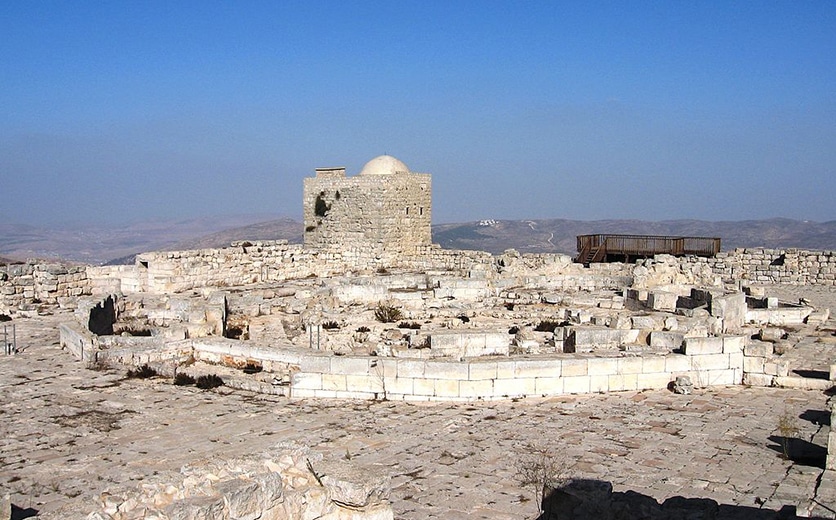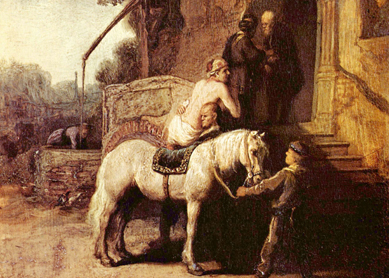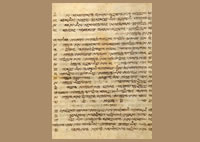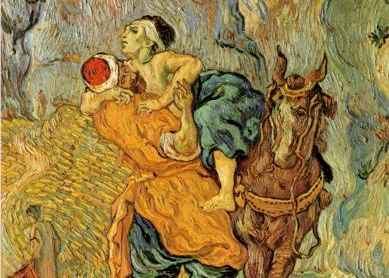Where should the God of Israel be worshipped: Jerusalem or Mount Gerizim?
In John 4, a Samaritan woman encounters Jesus at Jacob’s Well in Sychar. During their conversation, she states: “Our ancestors worshiped on this mountain, but you say that the place people must worship is in Jerusalem.” The mountain to which she refers is Mount Gerizim, the sacred mountain of the Samaritans and former location of the Samaritan temple.
Mount Gerizim is called Jabal et-Tur in modern Arabic and Tura Berikha (“The Blessed Mountain”) in Aramaic. The mountain rises approximately 886 meters above sea level and is located just to the south of Nablus (ancient Shechem). A twin mountain, Mount Ebal, is situated just north of Nablus and tops out at 938 meters above sea level.
The designation of this mountain as the “The Blessed Mountain” stems from the first mentions of Mount Gerizim in the Hebrew Bible. According to Deut 11:29 and 27:12, Moses told the Israelite people that, upon entering the land of Canaan, they were to assemble at Mount Gerizim and Mount Ebal for the purpose of holding a covenant ceremony; half of the tribes were to stand on Mount Gerizim and pronounce the blessings that would follow from obeying the covenant of God, while the other half were to stand on Mount Ebal and recite the curses that would accompany disobedience. Joshua 8 records that the Israelites did just this, as Joshua built an altar, sacrificed to the God of Israel, and read aloud the words of the covenant, with the tribes assembled at the foot of Gerizim and Ebal. Mount Gerizim is also mentioned in Judg 9, when Jotham stands on the mountain and denounces Abimelech and the men of Shechem for their role in the killing of Jotham’s brothers.
Soon after the Judean exiles returned from Babylon and rebuilt the temple to the God of Israel in Jerusalem in the late sixth century BCE, a temple dedicated to the same God and modeled after the Jerusalem temple was constructed on Mount Gerizim. Excavations carried out by Yitzhak Magen between 1984 and 2006 have definitively dated the beginnings of this Samaritan temple to the mid-fifth century BCE. This Samaritan temple underwent significant renovations in the early second century BCE, and by this time there was a large Samaritan city surrounding the temple at the top of the mountain. In 110 BCE, however, the Hasmonean leader John Hyrcanus destroyed the Samaritan temple and within a few years took control of the entire region. Even after the destruction of this temple, Mount Gerizim remained sacred to Samaritans. Josephus, the Gospel of John, and later rabbinic, Christian, and Samaritan sources all attest to the continued importance of Mount Gerizim to the Samaritans in ensuing centuries.
In the late fifth century CE, the Byzantine emperor Zeno built a church honoring Mary Theotokos (Mother of God) on top of the Samaritans’ sacred mountain. A Samaritan revolt damaged the church, but in the early sixth century CE the Byzantine emperor Justinian I rebuilt the Theotokos church and fortified the surrounding area. This octagonal church stood until the Arab invasion in the seventh century CE, when it was destroyed.
Mount Gerizim remains sacred to Samaritans to this day. Passover festivals, along with other important Samaritan holidays, continue to be celebrated by many Samaritans, some of whom still live in a village near the top of Mount Gerizim.





